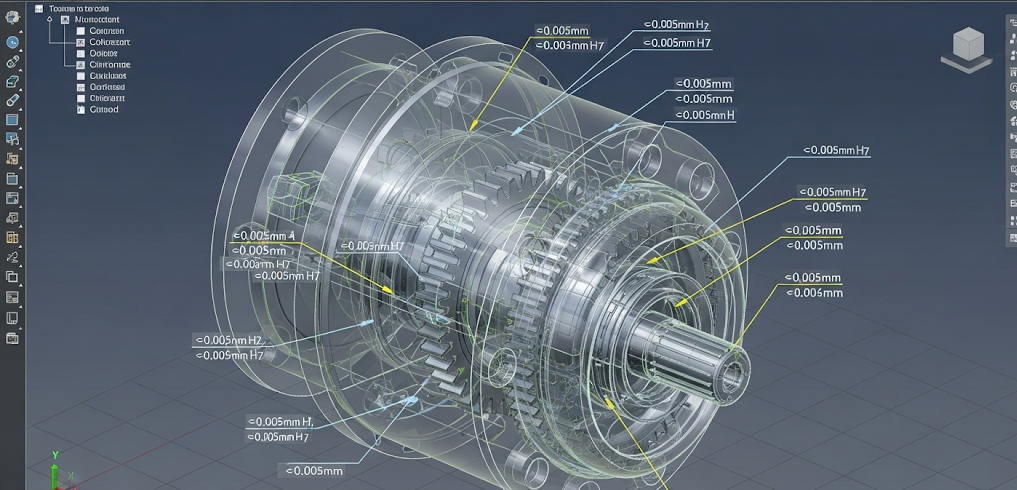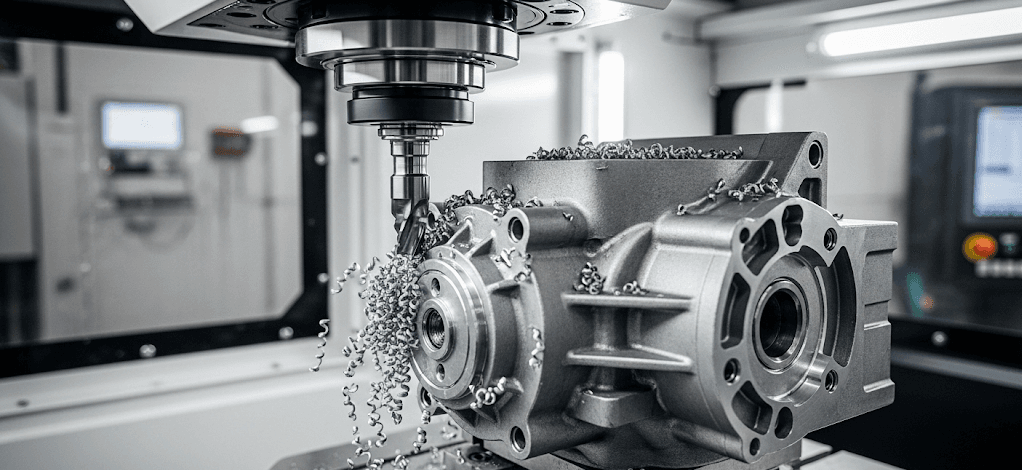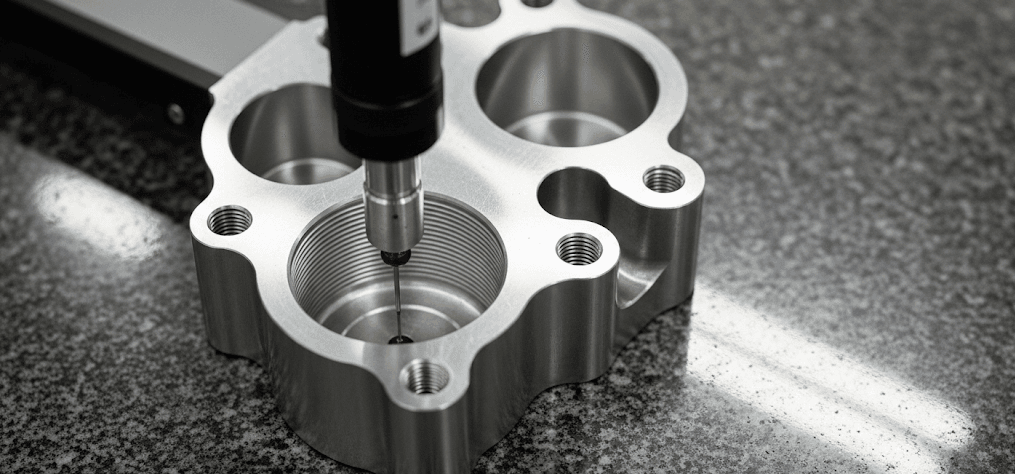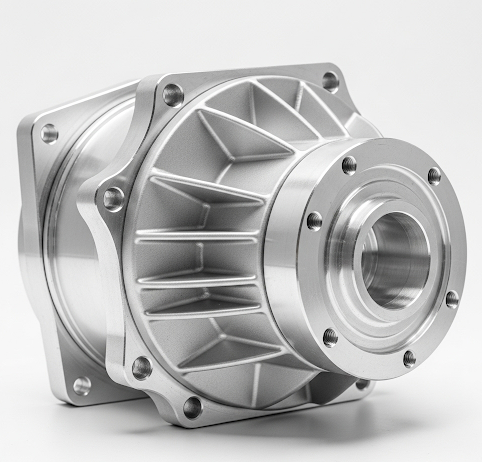Description
The robot reducer housing is more than just a protective shell; it is a critical structural component that directly impacts the robot’s precision and longevity. At ly-machining, we specialize in the CNC machining of these essential robot shell parts, ensuring they meet the stringent demands of the robotics industry. This housing is responsible for maintaining the precise alignment of internal gears and bearings, a key factor in the robot’s operational accuracy.
Our expertise in CNC milling allows us to manufacture reducer housings from robust materials like 7075 aluminum alloy. This material is selected for its optimal balance of high strength and low weight, which is crucial for dynamic robotic applications. Every feature, from mounting points to internal bores, is machined to exact specifications.
Analysis of CNC Machining Challenges for Reducer Housings
Manufacturing a robot reducer housing via CNC machining presents several technical hurdles. The part’s complex geometry, characterized by deep pockets and thin walls, demands sophisticated multi-axis CNC milling strategies to prevent material deformation and maintain structural integrity. The functional core of the housing requires exceptional precision.
The concentricity and perpendicularity of bearing bores are paramount; any deviation can lead to premature wear and failure of the gear system. We address this by employing advanced workholding techniques and meticulously planned toolpaths. The flatness of mounting surfaces is another critical parameter, ensuring a perfect seal and stable connection with adjoining robotic components, which our CNC machining process guarantees.

Our Advanced CNC Machining Process
Our production process begins with a thorough design for manufacturability (DFM) analysis of the client’s CAD model. This proactive step allows us to optimize the design for CNC machining, identifying potential challenges before any material is cut. We utilize state-of-the-art 5-axis CNC milling centers, which enable us to machine intricate features in a single setup, drastically reducing tolerance stack-up and enhancing precision.
The initial roughing stages of the CNC machining process are carefully controlled to remove bulk material efficiently without inducing stress. For finishing passes, we deploy high-speed cutting tools and techniques to achieve superior surface finishes, often as fine as Ra 0.8μm. Throughout the CNC milling process, in-process probing is used to verify critical dimensions, ensuring every robot shell part adheres strictly to the specified tolerances.

Guaranteed Performance: The Result of Expert CNC Machining
The final product is a robot reducer housing that excels in both form and function. Our meticulous CNC machining approach ensures that every housing delivers unparalleled dimensional accuracy and a flawless surface finish. These qualities are not merely aesthetic; they are fundamental to the performance of the entire robotic system.
By maintaining tight tolerances on features like bearing pockets and gear meshes, we significantly enhance the operational smoothness and reduce mechanical noise. The structural integrity of our robot shell parts guarantees reliability under high-load and continuous-motion conditions. Choosing ly-machining for your CNC milling needs means investing in the long-term performance and durability of your robotic assets.

Data-Driven Precision: CNC Machining Specifications
Our commitment to quality is backed by verifiable data. The table below outlines the typical specifications we achieve for our robot reducer housing CNC machining services, compared with standard industry tolerances.
Case Study: Enhancing Robotic Arm Performance
A leading robotics firm approached us with a challenge: their existing reducer housings were suffering from inconsistent gear alignment, leading to premature wear and frequent field failures. Their previous supplier struggled to maintain the required geometric tolerances using conventional 3-axis CNC machining.
We re-engineered the CNC milling process for these robot shell parts, transitioning to a unified 5-axis strategy. This change minimized setups and maximized rigidity. The result was a 5x improvement in the positional accuracy of the mounting holes and a 4x improvement in the concentricity of the bearing bores. This enhancement not only solved the reliability issues but also improved the robot’s overall positional accuracy.

Frequently Asked Questions (FAQ)
1. What is the tightest tolerance you can achieve with your CNC machining process? From an engineering standpoint, our precision is dictated by the specific part geometry and material. However, for critical features on robot shell parts like reducer housings, we consistently achieve tolerances as tight as ±0.005 mm (5 microns). Our 5-axis CNC milling capabilities and stringent quality control, including CMM verification, allow us to guarantee this level of precision.
2. Which materials do you recommend for robot reducer housings and why? For applications requiring high strength and low weight, we strongly advocate for Aluminum 7075-T6. Its mechanical properties are superior to more common alloys like 6061. For environments where corrosion resistance is the primary concern, we recommend Stainless Steel 304 or 316. Our engineering team can consult with you to select the optimal material based on your specific load, environment, and performance requirements for your CNC machining project.
3. How do you ensure the quality and consistency of your CNC milled parts? Quality is not an afterthought; it is engineered into our entire CNC machining process. It starts with a DFM review and continues with in-process probing on our CNC machines. Every first-off part undergoes a full inspection on our Coordinate Measuring Machine (CMM). We maintain rigorous process documentation and operator training to ensure that every robot shell part, from the first to the last, is identical and meets all specifications.






